Minds On
Let’s get started!
Explore the following images of artwork by artist Andy Goldsworthy. As you explore his art, consider the following questions:
What do you notice about the artwork?
Press ‘Hint’ to access an example.
What shapes and/or colours do you notice?
What do you wonder about the artwork?
Press ‘Hint’ to access an example.
Where was the artwork created? How was the artwork created?
Record your ideas on paper, digitally or as an audio recording.

Rowan leaves laid around a hole by Andy Goldsworthy, 1987
This sculpture was created using naturally found materials. It is a black hole in the centre surrounded by tiny fallen leaves that begin as yellow close to the centre. Toward the edges of the circle, the colours darken to orange, then red. Outside the circle, the leaves are of a different species and are green.
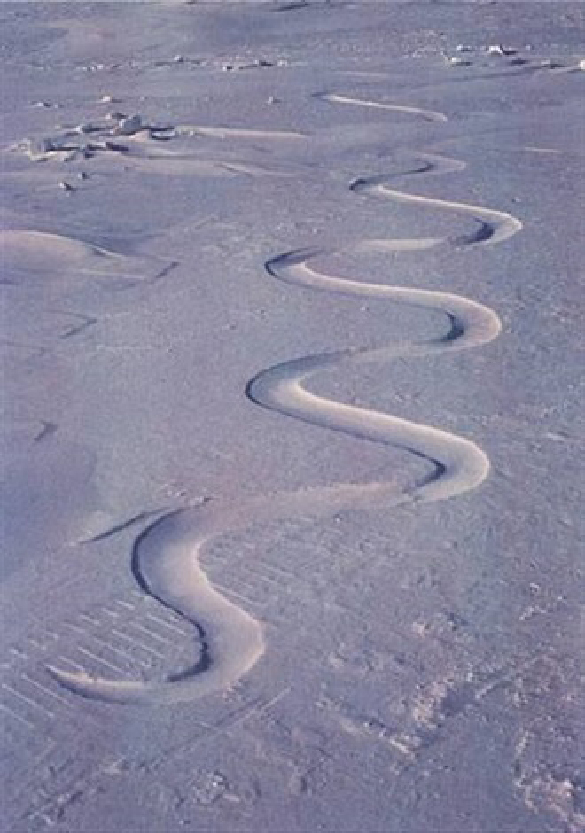
Snow drift, carved into, waiting for the wind by Andy Goldsworthy, 1989
This piece of art was created in the snow on a large stretch of ground that is flat. There is a pattern in the snow that appears like a slithering snake, using curvy lines. The one end stops in a point and the other end appears to disappear into the background.
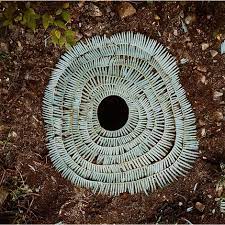
Started Climbing by Andy Goldsworthy, 1987
This sculpture was created using naturally found materials. On the ground, there is a black hole in the centre surrounded by circles of pine needles that have been laid down in layers beside each other to create bigger and bigger circles each time.
Action
Get ready, get set…
Who is Andy Goldsworthy?
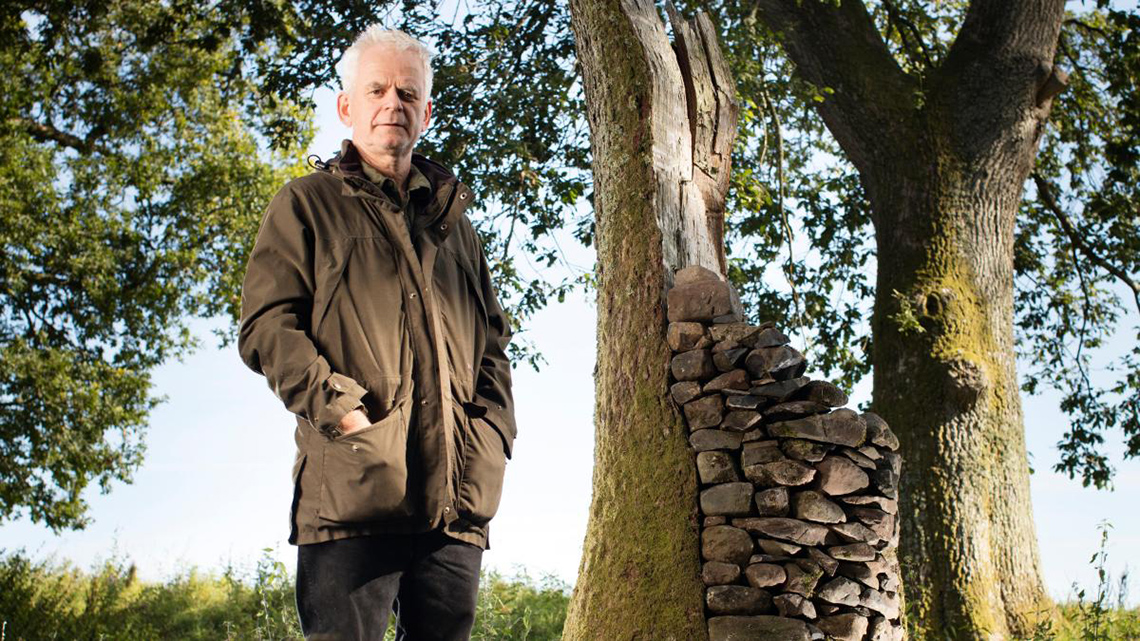
Andy Goldsworthy
Andy Goldsworthy is a British sculptor and photographer and is part of the Environmental Art movement. He creates art using found natural materials, for example, rocks, ice, leaves or branches. This means that the materials are not still part of living plant.
His work is temporary. That means that as the weather changes his work slowly breaks apart or blows away over time.
Reading Time
What is the Environmental Art Movement?
The Environmental Art Movement started in the 1960s and 1970s. Artists created sculptures in different places using found natural materials. They took photographs of their art because it would break apart over time. The goal of the environmental artists was to work with and respect nature.
Go!
Natural sculpture
Let’s explore how the artist Andy Goldsworthy uses natural materials in his art.
Compare the first two examples.
- What kind of materials do you notice?
- What is similar and/or different about these two natural sculptures?
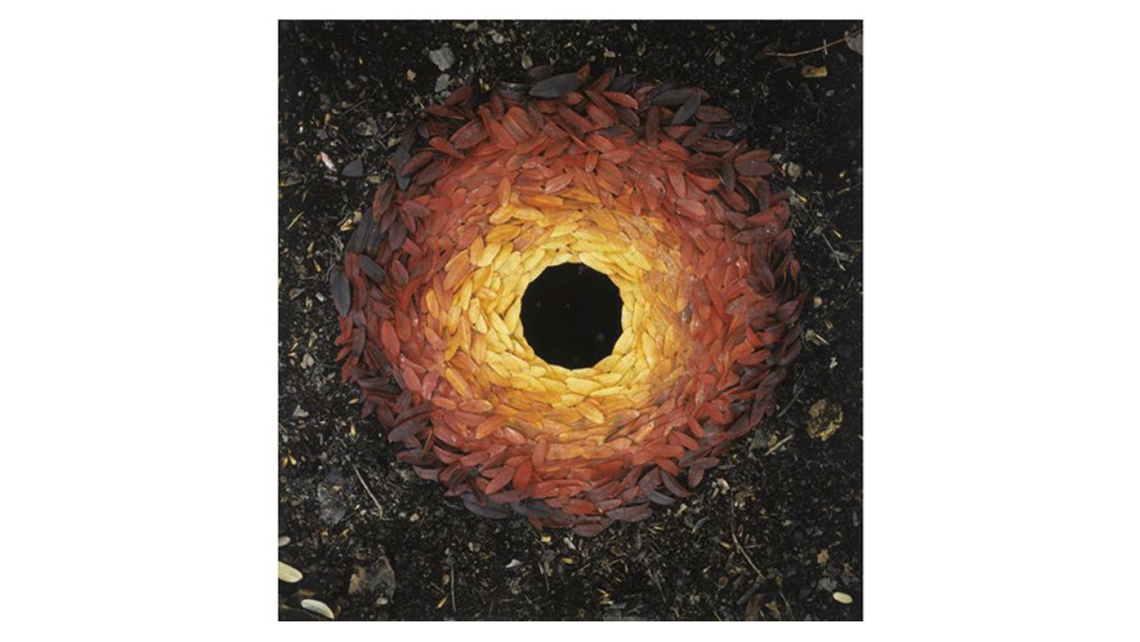
Rowan leaves laid around a hole by Andy Goldsworthy, 1987
This sculpture was created using naturally found materials. It is a black hole in the centre surrounded by tiny fallen leaves that begin as yellow close to the centre. Toward the edges of the circle, the colours darken to orange, then red. Outside the circle, the leaves are of a different species and are green.
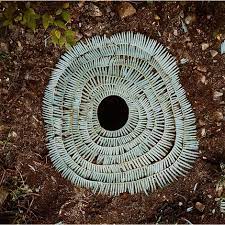
Started Climbing by Andy Goldsworthy, 1987
This sculpture was created using naturally found materials. On the ground, there is a black hole in the centre surrounded by circles of pine needles that have been laid down in layers beside each other to create bigger and bigger circles each time.
Press ‘Let’s Check’ to reveal a possible answer.
In the first example, Andy Goldsworthy used brownish-red, red, orange and yellow leaves. They are all warm colours. He arranged them in a circle so that they go from darkest to lightest around a black hole. They remind me of fire or the colours of the sunset.
In the second example, Started Climbing, Andy Goldsworthy also creates a circle of leaves. This time, he uses a light green for the whole sculpture. The leaves are spiky and seem to move in a swirly line.
The shape Andy Goldsworthy creates in both is a circle but each is a little different.

Snow drift, carved into, waiting for the wind by Andy Goldsworthy, 1989
This piece of art was created in the snow on a large stretch of ground that is flat. There is a pattern in the snow that appears like a slithering snake, using curvy lines. The one end stops in a point and the other end appears to disappear into the background.
How is this natural sculpture different from the other two examples?
Press ‘Let’s Check’ to reveal a possible answer.
This sculpture does not include shape. Instead Andy Goldsworthy created a line.
What kind of line does Andy Goldsworthy create?
What is a line?
Line: An element of design. The path left by a moving point, such as a pencil or a digital drawing tool. A mark that leads the audience’s attention in an artwork. Changing the kind of lines can be used to suggest diverse ideas, shapes, or emotions. For example, a horizontal line can feel calm.
Press ‘Let’s Check’ to reveal a possible answer.
It is a curvy line.
What kind of message might Andy Goldworthy be sharing with this work?
Press ‘Let’s Check’ to reveal a possible answer.
Maybe the artist is creating a path in the snow.
Why do you think Andy Goldsworthy takes a picture of his artwork when he is finished?
Press ‘Let’s Check’ to reveal a possible answer.
Andy Goldsworthy’s sculpture work is temporary. This means that as the landscape changes, his work will scatter or melt. Taking a photo helps to capture the sculpture when it is complete.
Brainstorm
If you could…

If you could create your own natural sculpture, what kind of shape, lines and/or colours would you use?
Record your ideas using a method of your choice.
Consolidation
Putting it all together

Natural sculpture
Now it’s your turn to plan out your own temporary natural sculpture made from materials found in nature.
Materials Needed
Materials
Possible materials you might need for this learning activity:
- a blank sheet of paper or an art journal
- drawing materials such as pencils or crayons
- an electronic tablet for drawing
- any other art materials you like to use
Safety
Always be sure to do your safety checks before you do an activity.
Before you begin, check:
Student Success
Exploring digital creation options
When you are considering digital creation options, explore the variety of digital applications available!
Note to teachers: See your teacher guide for collaboration tools, ideas and suggestions.
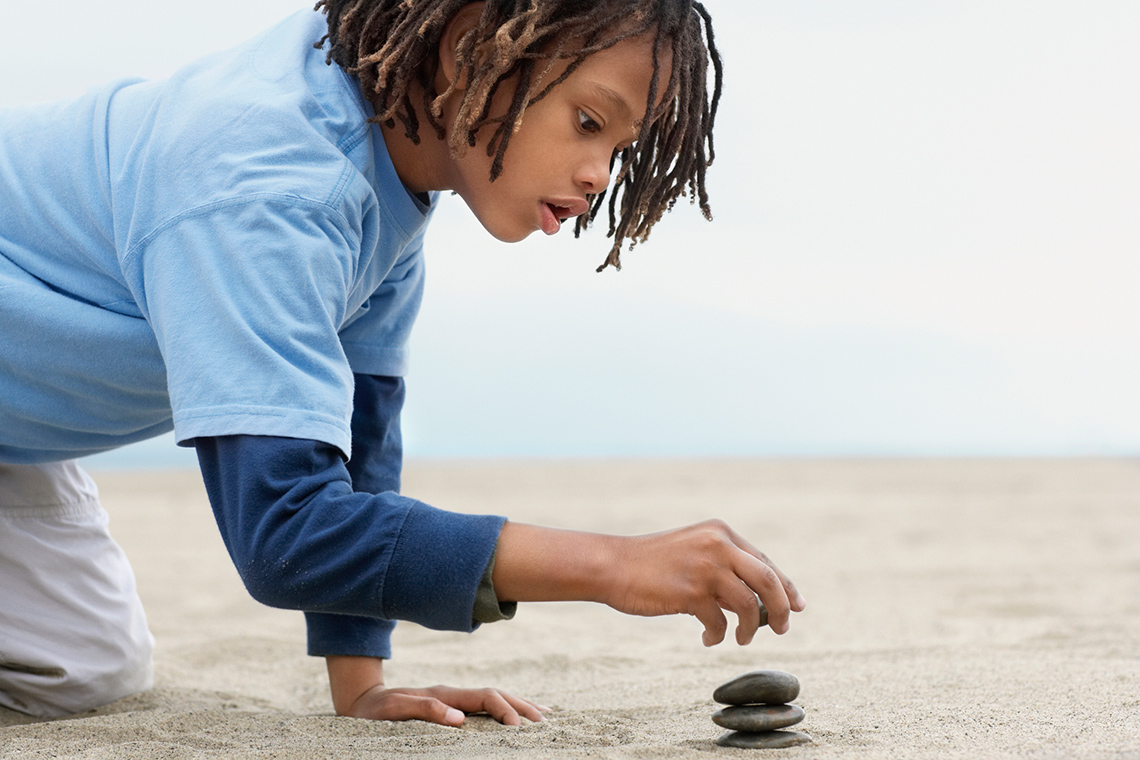
Now it’s your turn to create a plan of a natural sculpture! Press the following tabs to check out a variety of methods to create your art plan. Choose one of the following options to try out!
Create a detailed description of how you would create your temporary natural sculpture.
What natural materials might you use?
Will you include a specific shape, lines and/or colours?
Create a plan for your temporary natural sculpture.
You may create your plan using:
- paper
- drawing/colouring materials (pencils, markers, pencil crayons etc.)
Create a digital poster of your plan using an application of your choice. Include examples of the natural materials you would use and how you might put them together.
Start by planning what kind of art piece you will create. How will you use the design elements discussed in the learning activity? Your artwork could be real or imaginary. Begin by planning how to include the design element.
Decide if you are using this design element or that design element.
Digitally create your piece using your plan! Remember to include details that create the feeling or the message you would like to communicate.
Use the following checklist to help guide you.
My plan includes…
When you have finished your plan, if possible, share it with a partner.
Reflection
How do you feel about what you have learned in this activity? Which of the next four sentences best matches how you are feeling about your learning? Press the button that is beside this sentence.
I feel…
Now, record your ideas about your feelings using a voice recorder, speech-to-text, or writing tool.